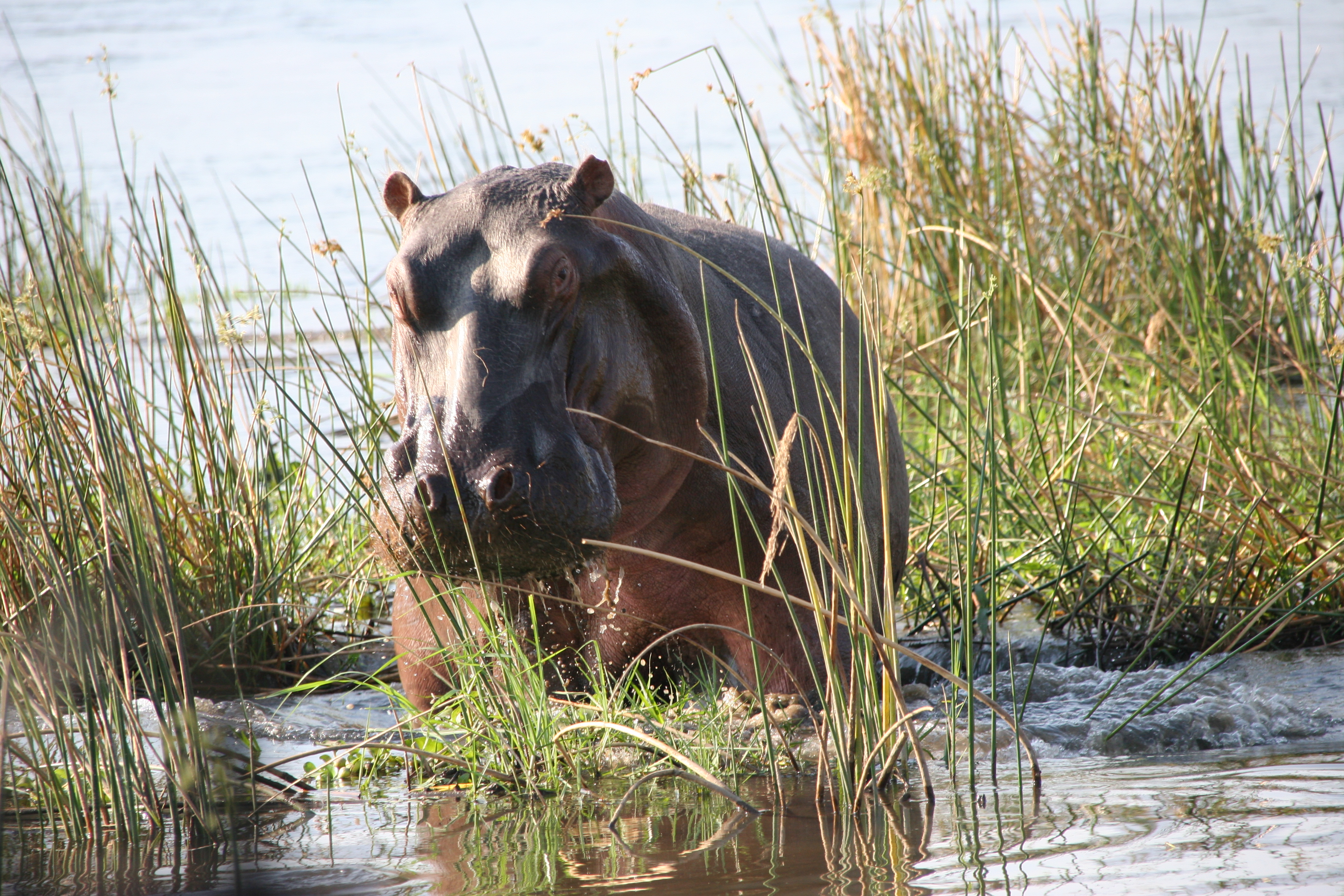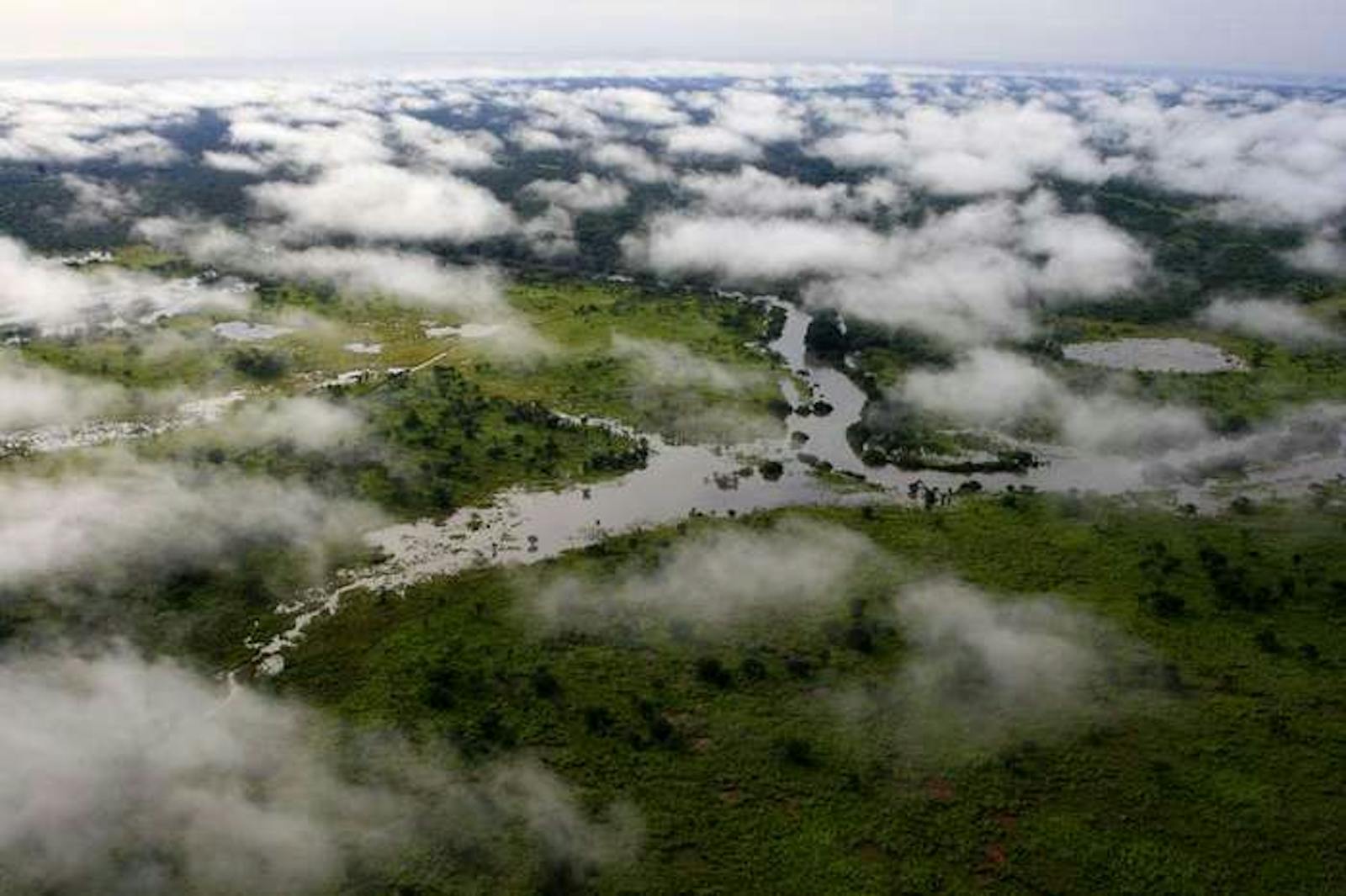Northern Congolian Forest-Savanna
The ecoregion’s land area is provided in units of 1,000 hectares. The protection goal is the Global Safety Net (GSN1) area for the given ecoregion. The protection level indicates the percentage of the GSN goal that is currently protected on a scale of 0-10.
Bioregion: Mandara Mountain & North Congolian Forest-Savannas (AT16)
Realm: Afrotropics
Ecoregion Size (1000 ha):
70,766
Ecoregion ID:
52
Conservation Target:
16%
Protection Level:
9
States: Central African Republic, South Sudan, Cameroon, Democratic Republic of the Congo, Uganda, Nigeri
Over the past million years, Central Africa has experienced repeated climatic fluctuations that have caused the expansion and contraction of rain forest and savanna. Plants and animals adapted, migrated or became extinct with each climatic oscillation. In present day, such oscillating natural forces are replaced by intensifying human activities and armed poachers that threaten to wildlife in this ecoregion, particularly elephants in which both savannah and forest elephants are present.

The flagship species of the Northern Congolian Forest-Savanna ecoregion is the African bush elephant. Image credit: Thomas Breuer, Creative Commons
The western black rhino, last seen in northern Cameroon, and the wild northern white rhino, whose last refuge was in Garamba National Park, have now gone extinct, primarily due to poaching.
This ecoregion extends from the Cameroon Highlands east through the Central African Republic, northeastern Democratic Republic of Congo (DRC), South Sudan, and into a sliver of northwestern Uganda. The ecoregion lies in the tropical savanna climate zone and is climatically transitional between the Sudanian and Guineo-Congolian regions.
A single wet season and a single dry season characterize the region, with mean annual precipitation ranging from 1,200 mm to 1,600 mm per year. The precipitation declines to the north as the ecoregion grades into the East Sudanian Savanna.
Temperatures range from 34°C in the rainy season to 13°C in the dry season. Most of the ecoregion sits on a dissected plateau 500 m in elevation, and rises to 700 m towards the Cameroon Highlands. Precambrian basement rocks underlie the area, outcropping as inselbergs. Forest, woodland, and secondary grassland intergrade in patterns controlled by annual precipitation, duration of water stress, and the severity of dry-season fires and human activity.
_male-CC-Charles%20J%20Sharp-2016.jpg)
Giant eland. Image credit: Charles J Sharp, Creative Commons
Forest, woodland, and secondary grassland intergrade in patterns controlled by annual precipitation, duration of water stress, and the severity of dry season fires and human activity. Gallery forests grow along watercourses and elsewhere with sufficient groundwater and remnant peripheral semi-evergreen rain forest occurs in the south.
Widespread species include Berlina grandiflora, Cola laurifolia, Cynometra vogelii, Diospyros elliotii, Parinari congensis, and Pterocarpus santalinoides. Remnant peripheral semi-evergreen rainforests also occur in the south, supporting species such as Afzelia africana, Aningeria altissima, Chrsophyllum perpulchrum, Cola gigantean, Morus mesozygia, and Khaya grandifolia. The ecoregion also contains expansive areas of moist wooded grasslands, including species of the genera Andropogon, Hyparrhenia, and Loudetia.

Hippo. Image credit: Terry Feuerborn, Creative Commons
This ecoregion supports moderate levels of faunal diversity. Mammals include a mixture of savanna and forest adapted species such as red-flanked duiker, giant eland, bongo, and northern savanna giraffe, as well as large predators such as the lion. The ecoregion also supports both forest elephants within the forest patches and savanna elephants in the savanna woodlands. The ochre mole rat and Pousargue’s mongoose are near-endemic species.
There is one near-endemic bird species, Oberlaender’s ground-thrush. There are a number of endemic amphibians and reptiles, including the Mauda River frog, Buta River frog, Bamileke Plateau frog, eastern dwarf clawed frog, and Inger's grassland frog. Reptiles include the strictly endemic Sudan beaked snake, Ichnotropis chapini, and Helophis smaragdina.
The ratio of forest to savanna in this area in this ecoregion has naturally fluctuated over time. Humans have also modified the ecosystem through their use of fire, agriculture, and livestock over at least 3,000 years. Protected areas include Garamba National Park in DRC, Mbem-Djerem and Bénoué National Park in Cameroon, and Southern National Park in South Sudan. There are also some wildlife and game reserves including Bomu wildlife reserve in Central African Republic.
Increasing human population, poverty, extended periods of civil wars in Sudan and DRC, strife between government and rebel groups in the Central African Republic, and incursions by well-armed poaching gangs, mean that this ecoregion faces many threats. The distribution of large mammals has been drastically reduced in recent times.
Armed militia and poachers, following civil wars in the region, threaten both park rangers and wildlife, particularly elephants. Between 2007 and 2014, 3,000 elephants were killed in Garamba National Park and the current population is estimated at 1,700 elephants. Hunting camps are found far into the bush, with ivory and other valuable animal products targeted to pay for weapons as well as food. Gallery forests are logged for timber. Fuelwood is collected in all areas and charcoal is produced where there is an urban demand.
The priority conservation actions for the next decade will be to: 1) strengthen local conservation effort to stop poaching of threatened species; 2) support the development of alternative livelihood opportunities for local communities living inside and around protected areas including sustainable harvesting of non-timber forest products; and 3) expand and improve the protected area network in the ecoregion.
Citations
1. Burgess, N., Hales, J.A., Underwood, E., Dinerstein, E., Olson, D., Itoua, I., Schipper, J., Ricketts, T. and Newman, K. 2004. Terrestrial ecoregions of Africa and Madagascar: a conservation assessment. Island Press.
2. de Wit, W., Marsh, E. and Kjemtrup, A. 2017. Halting the illegal trade of CITES species from world heritage sites. Gland, Switzerland: World Wide Fund for Nature.
3. Ministry of Environment. 2015. Fifth National Report to the Convention on Biological Diversity. South Sudan: The Republic of South Sudan.
4. European Commission. 2015. Larger than elephants. Inputs for an EU strategic approach to wildlife conservation in Africa-synthesis. Luxembourg: European Union.




